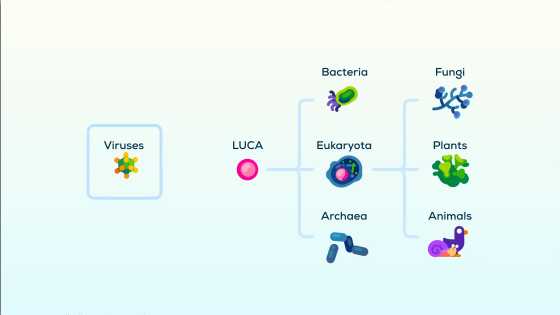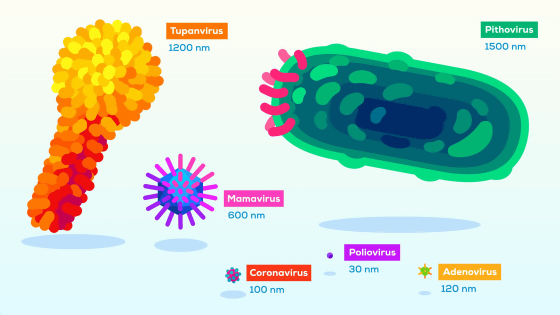What is the giant virus 'Girus' that shakes the boundary between viruses and living things?

There are various types of viruses on the earth, such as the new coronavirus and Ebola virus, which are rampant all over the world. The size of a commonly known virus is about tens to hundreds of nanometers, but the existence of a giant virus called 'Girus', which is more than 10 times as large as that, has been confirmed.
This Virus Shouldn't Exist (But it Does) --YouTube
There are many types of viruses on the earth, such as adenovirus, which is the causative virus of colds, Rabies lyssavirus , which causes rabies, and the new coronavirus (SARS-CoV-2). I am.

These viruses are characterized by being composed of simple substances such as genetic information and membranes made of lipids.

There is active debate about whether the virus is a living thing, but no conclusions have been reached.

Some scientists think of the virus and the cells parasitized by the virus as 'Virocells'.

Some scientists treat it as completely non-living.

Fungi, plants, and animals are

There are various theories about how the virus appeared on the earth, such as the theory that the virus is in the process of gradually developing organisms from mere genetic information ...

The theory that the DNA that escaped from the cell gained the ability to make its own copy ...

There is a theory that organisms that parasitize cells have evolved to the limit and become viruses.

There are a huge number of viruses on the earth ...

The total number is estimated to be

If the viruses are lined up horizontally, they will reach the length of 500

Most viruses are known to be tens to hundreds of nanometers in size ...

In recent years, the existence of a huge virus has been confirmed compared to other viruses called gyrus.

This gyrus is found in a variety of environments, including beaches, water towers, livestock facilities, and the human mouth.

Comparing the size of Gyrus and general viruses, it looks like this. Which is one of Gyrus

Gyrus, which was first discovered, in 1992,

Mimivirus gets inside Acanthamoeba ...

It forms the 'byroplasm' of the virus production plant in the body.

And the mimivirus that increased in number inside Acanthamoeba ...

It issues a self-destruction command to Acanthamoeba and jumps out of the body.

Gyruss is unique not only in its size, but also in its tens of thousands of genes in its body.

The peculiarity of Gyrus can be seen from the fact that human cells have about 20,000 genes, the new coronavirus has only 15

It has been found that some of the large number of genes possessed by Gyruss are used for the function of entering the inside of the host and the function of multiplying inside.

However, there are so many parts of the Gyruss gene that are not used for any function, which is confusing to scientists.

In addition, several strange ecology have been confirmed from Gyrus. For example, incorporating its own genetic information into the host to form a

Extract genetic information from host cells ...

Ecology such as incorporating it into one's own gene has been confirmed.

Scientists point out that these ecology may have deeply involved Gyruss in the evolution of living things.


When Virophage uses Mimivirus, both Virophage and Mimivirus release their own genetic information ...

Virophage inhibits mimivirus replication, and only virophage may proliferate.

In addition, another species of virophage enters the biroplasm formed by the mimivirus ...

A chimera of mimivirus and virophage may be born.

It is known that eubacteria and

Similarly, gyrus such as mimivirus has a part that stores foreign genes and is known to protect against invasion of virophage. This defense mechanism is called 'MIMIVIRE (Mimivirus Virophage Resistance Element)'.

As mentioned above, many characteristics have been clarified in about 20 years since the discovery of Gyruss. In addition, as mentioned above, since Gyruss has characteristics similar to those of living organisms, it has been pointed out that the boundary between viruses and living organisms has become ambiguous, and future research is drawing attention.
Related Posts:







